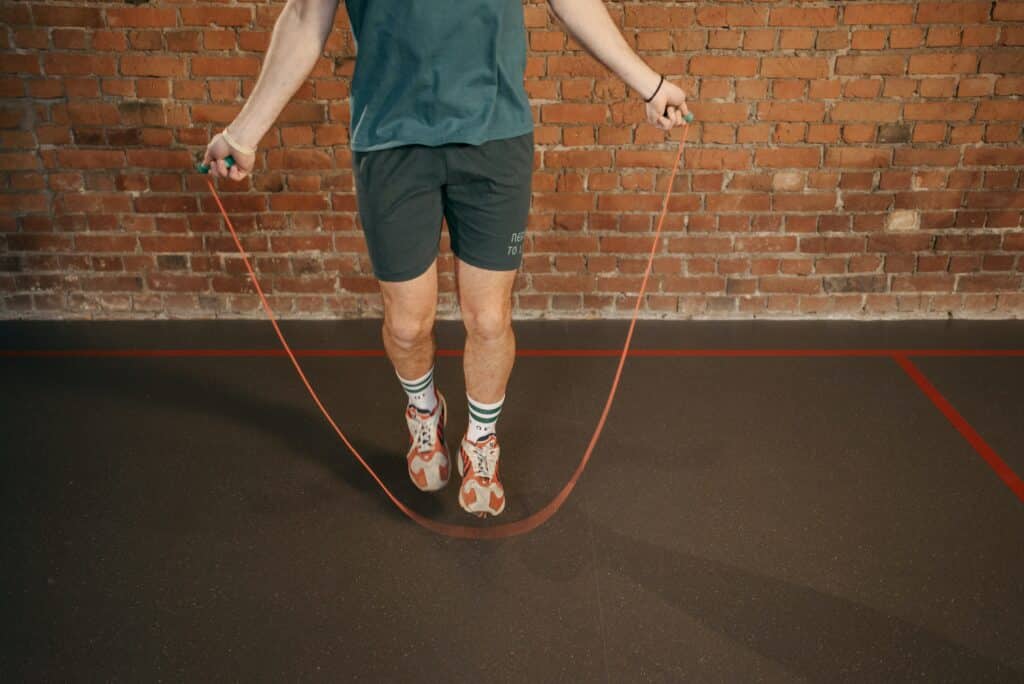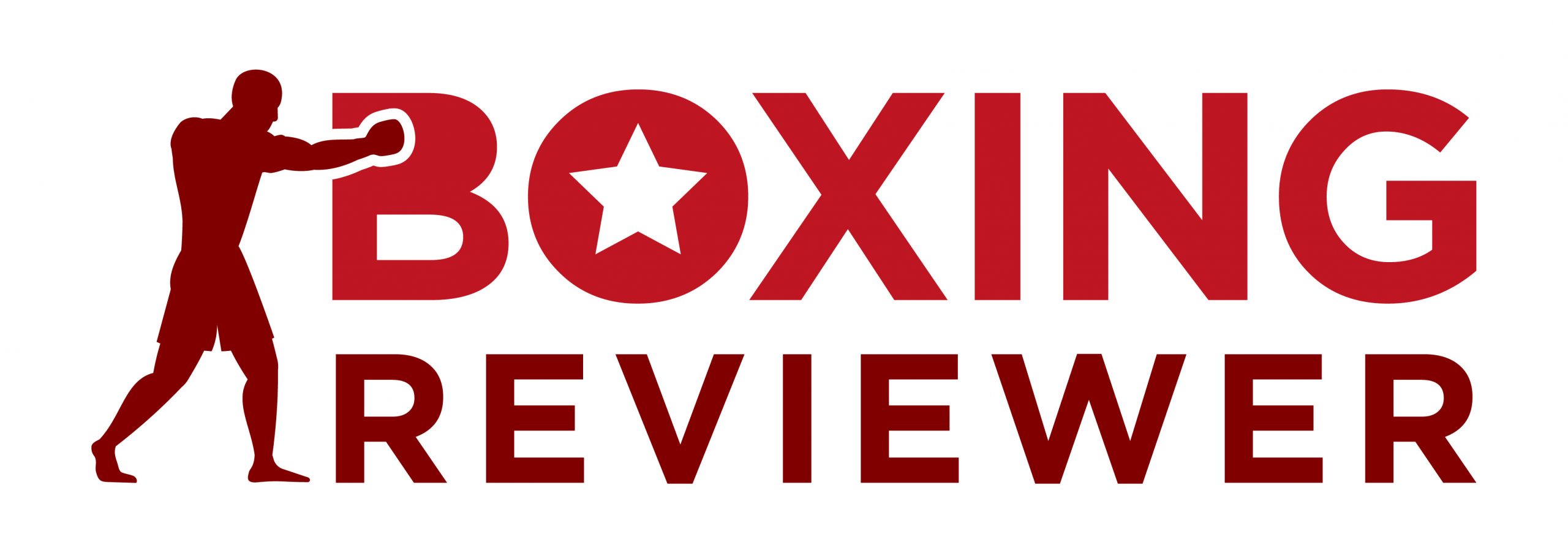Ever wondered why boxers jump rope?
Jumping rope isn’t just a random warm-up for boxers; it’s a vital part of their training.
Skipping rope helps boxers with their footwork, stamina, and timing—crucial skills in the ring. While jumping rope may look easy, it holds significant value in boxing preparation
In this post, I’ll explore the benefits of jumping rope for boxers and skipping techniques that make you a better fighter.
Benefits of Jumping Rope for Boxers
Skipping rope offers myriad benefits to boxers beyond helping them stay in shape. Here’s a rundown of what introducing a jump rope to your boxing training regimen can do.
Cardiovascular Conditioning
Jumping rope is an excellent way to improve cardiovascular health. Regularly skipping can boost a boxer’s heart rate to around 70-85% of their maximum, ideal for aerobic conditioning.
Furthermore, studies have shown that just 10 minutes of jumping rope can be equivalent to running a mile in 8 minutes.
As the cardiovascular system strengthens, a boxer experiences enhanced endurance. That way, they can maintain energy throughout boxing rounds.
Furthermore, a boxer with top-notch cardiovascular conditioning can consistently outpace and outlast competitors.
Improved Footwork

Any accomplished boxers must perfect their footwork, and jumping rope can help refine it.
You see, developing rhythm and timing is crucial in boxing, and the repetitive nature of skipping helps in this.
A study published in the Journal of Sports Science & Medicine found that athletes who incorporated jump rope routines showed a 24% improvement in foot coordination in just six weeks.
In addition, jumping rope helps improve your agility and quickness in the ring.
According to a report from the National Strength and Conditioning Association, athletes who practiced rope jumping had a 10% increase in agility compared to those who didn’t.
This translates to being nimbler and more reactive for boxers, dodging punches and moving strategically more easily.
Coordination and Balance
Jumping rope is a cyclic activity involving maintaining a steady, regular interval, which, in turn, enhances the coordination between a boxer’s eyes, feet, and hands.
The repetitive rhythm of jumping rope forces the body to work in unison, ensuring a fighter can deliver punches with improved accuracy. It also enhances defenses during intense bouts.
Strength and Muscle Toning
Jumping rope is an excellent exercise for targeting specific muscle groups crucial for boxers. The dynamic workout targets the calves, ankles, and core to provide fighters with a solid foundation for balance and stability in the ring.
Additionally, the rhythmic motion of swinging the rope tones the arms and shoulders, enhancing the endurance and power required for throwing rapid, precise punches.
Mental Focus and Rhythm
The continuous repetition of jump rope exercises demands focus, sharpening a boxer’s capacity to remain fully engaged even in the most high-pressure moments within the ring.
Furthermore, it sets a steady rhythm for breathing and movement, aligning a boxer’s actions with a controlled cadence.
The synchronization helps fighters maintain composure, making clear split-second decisions while ensuring their moves are accurate and calculated.
Jump Rope Offers Cost-Effective and Portable Training
Jump rope training can effortlessly integrate into any routine. In addition, the cost-effectiveness makes it accessible to athletes of all levels, requiring minimal investment compared to complex gym equipment.
What sets a jump rope apart is its portability – you can pack a jumping rope into a bag and take it anywhere, allowing boxers to train on the go. The point is; jump rope is a training tool that adapts to any location or schedule, whether in the gym, at home, or even outdoors.
7 Jump Rope Routines to Make You a Better Boxer
Like honing any skill set, improving your jump rope technique is gradual.
Begin by setting achievable goals. You can, for instance, start with just three to five consecutive jumps without getting caught in the rope.
Gradually increase your target to 10, then 20, and eventually 30 uninterrupted jumps.
Your first significant milestone is conquering three full minutes – akin to a single boxing round – without tripping up.
You shouldn’t worry if you stumble once or twice during those three minutes; it’s all part of the learning process. What truly matters is conditioning your body for the demands of a round in the ring rather than perfecting the art of rope skipping.
Once you’ve established a comfort zone with your jump rope, here are seven drills to elevate your boxing game, helping you build coordination, stamina, and mental focus.
Basic Jump Rope Workout
You can use this jump rope routine as a foundational warm-up and training exercise.
Start with 5 minutes of basic jump rope to get your heart rate up and your muscles engaged.
While you’re at it, focus on proper form – hold the rope’s handles with a comfortable grip, keep your elbows close to your body, and jump using your wrists for a smooth rotation.
After the warm-up, dive into 3 rounds of 3 minutes each, with 1-minute rest intervals in between. During these rounds, you can experiment with your jumping speed, alternating between slow, controlled, and faster, more intense jumps.
The basic jump rope workout enhances your overall cardiovascular fitness, rhythm, and footwork. It’s a fundamental exercise for boxers, helping you build endurance while fine-tuning your coordination.
Double-Unders for Footwork
Double-unders involve swinging the rope under your feet twice in a single jump. Start with 2 minutes of basic jump rope to warm up.
Then, spend 1 minute practicing double-unders. To perform a double-under, jump slightly higher and rotate the rope faster than usual.
Repeat this pattern for 3-5 rounds, focusing on consistency and control during your double-unders.
Double-unders are excellent for improving footwork, timing, and coordination. It challenges you to jump higher and turn the rope faster, which translates to enhanced agility in the boxing ring.
Interval Training for Stamina
Interval training is designed to boost your stamina and endurance, replicating the intensity of boxing rounds. Begin with 5 minutes of steady-paced jumping to warm up.
Next, jump at maximum intensity for 1 minute, pushing your speed and effort to the limit.
After the intense minute, rest for 30 seconds. Use this time to catch your breath and recover.
Repeat this pattern for 5-10 rounds, gradually increasing the number of rounds as your fitness improves.
This high-intensity interval training (HIIT) mimics the demands of boxing matches, enhancing your cardiovascular fitness and ability to maintain energy and focus throughout the fight.
Cross Training for Agility
Cross-training involves incorporating crossovers into your jump rope routine. Begin with 3 minutes of basic jump rope for warm-up.
Then, introduce crossovers by crossing your arms in front of your body while jumping. This movement challenges your coordination and rhythm.
Spend 1 minute practicing crossovers, then switch back to regular jumping for recovery.
Alternate between crossovers and regular jumping for 3-5 rounds.
Crossovers help improve your agility, hand-eye coordination, and rhythm, essential attributes for a successful boxer.
Shadow Boxing and Jump Rope Combo
This combination routine merges jump rope training with shadow boxing, simulating the movements and intensity of a boxing match.
Begin with 3 minutes of basic jump rope to warm up your body.
Transition to 1 minute of shadow boxing, focusing on proper form and technique while throwing punches and moving around as if in a real fight.
Repeat the jump rope and shadow boxing sequence for 3-5 rounds, allowing you to work on your cardiovascular fitness, concentration, and rhythm simultaneously.
Shadow boxing and jump rope combo helps you maintain mental focus and physical coordination during a simulated match, making it a highly effective training exercise for boxers at all levels.
Front To Back
The “Front To Back” jump rope focuses on footwork, balance, and coordination.
Begin with 3 minutes of basic jump rope to warm up your body and prepare for the exercise.
To perform “Front To Back,” start by jumping forward and landing on your left foot, then immediately jump backward and land on your right foot.
Alternate between forward and backward jumps with each rope rotation, maintaining a steady rhythm.
Continue this pattern for 2-3 minutes or as long as you feel comfortable.
“Front To Back” jump rope helps improve your ability to control your movements in different directions, which are essential skills for a boxer in the ring.
The Boxer Skip
“The Boxer Skip” is a jump rope technique that mimics the movements and footwork commonly seen in boxing.
Begin with 2 minutes of basic jump rope to warm up your muscles.
To perform “The Boxer Skip,” alternate between short, quick hops on one foot while the other is slightly lifted, resembling the boxer’s footwork.
After a few hops on one foot, switch to the other, mimicking the way boxers move in the ring.
Maintain a brisk but controlled pace, focusing on rhythm and balance.
Continue this pattern for 2-3 minutes or longer, gradually increasing the duration as your skills improve.
“The Boxer Skip” enhances your ability to move swiftly and change direction in the ring, closely replicating the footwork used by boxers during actual bouts.
Incorporate Jump Rope Into Your Boxing Routine
Adding jump rope into your boxing routine can be a strategic decision to elevate your skills and performance in the ring.
As you’ve seen from the seven rope routines above, a jump rope is a simple yet versatile tool for improving your coordination, stamina, mental focus, and agility.
Remember that mastering jump rope is a gradual process, and every jump brings you closer to boxing excellence.
Whether you’re a seasoned fighter or just stepping into the world of boxing, the jump rope is your steadfast companion in becoming a better boxer.
So, take that first jump, embrace the rhythm, and let the repetitive motion propel you toward more outstanding boxing prowess.


0 comments